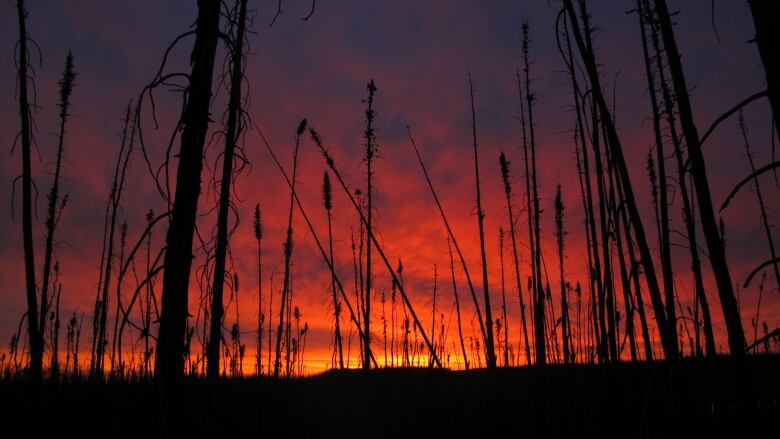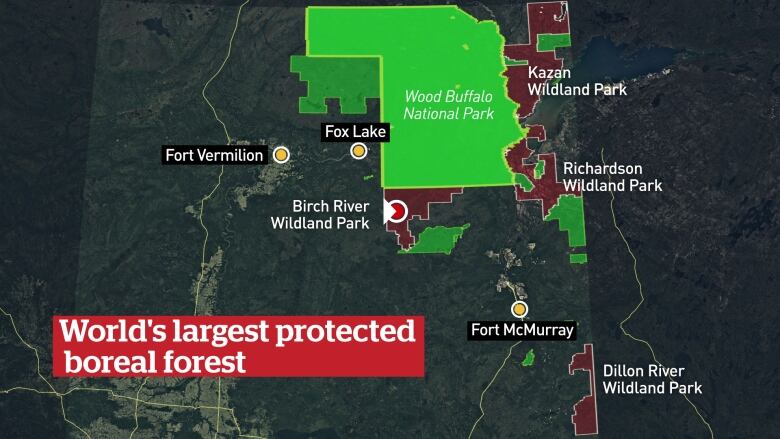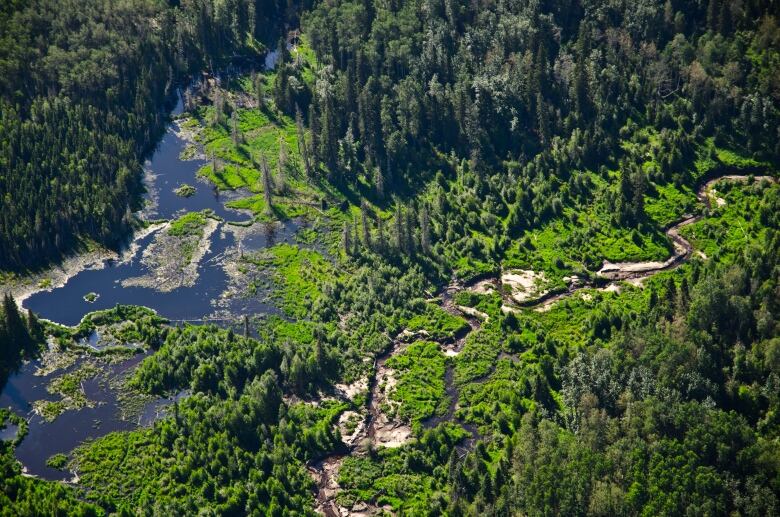Alberta now has world's largest expanse of protected boreal forest
The conservation area is twice the size of Vancouver Island

Alberta is now home to the largest area of protected boreal forest in the world, following an announcement Tuesday that set aside more than 13,600 square kilometres of land across much of northeast Alberta.
The provincial and federal governments,theTallcree First Nation,oilsandsgiant Syncrudeand theNature Conservancy ofCanada announced the creation of new protected areas at a news conference in Edmonton.
"It is very rare that you can announce a protected area network that is globally significant in such incredible size," said Bob Demulder, the NCC'sregional vice-president for theAlberta region. "These things don't happen very often."
The province will formally establish four new parks Kazan, Richardson, Dillon River and Birch River and expand the Birch Mountains WildlandProvincial Park.
All of the parks, except Dillon River, border onWood Buffalo National Park, a UNESCO world heritage site.

The creationof all but one of theparks wasannounced in 2012 butnever enacted, said MattDykstra, press secretary to the minister of the environment and parks.
Together with Wood Buffalo National Park and the existing and new parks, the protected landwill form a conservation area of67,735 square kilometres, almost twice the size of Vancouver Island.
The area will be off limits to logging and other industries, such as oilsandsdevelopment.
First Nation and industry seal the deal
The Birch River park was created after complicated agreements between the Alberta and federal governments, the Tallcree First Nation and the NCC.
The Tallcreetribal government agreed to relinquisha timber quota it had no intention of using, which was then purchased by the NCC for $2.8 million, with Syncrudeproviding the majority of the funding.
"The boreal forest holds greater value to the First Nation for exercising our traditional way of life and the quiet enjoyment of our treaty rights," Chief Rupert Meneen, from theTallcreetribal government, said in a news release.
The government will enter into management and monitoring agreements with First NationsandMtiscommunities.
The province said it will fund the process ofintegratingIndigenous traditional knowledge and will hire Indigenous monitors to maintain and offer education and outreach to park visitors.
Offsetting pressure from oilsands
Syncrudesaid in a joint news releasethe park will be used to offset land disturbancecaused by its future industrial activities.
The company has contributed $2.3 million to the creation of the Birch River protected area.
"This agreement supports our commitment to responsible development of the oilsands resource, while contributing to the conservation of the boreal forest for future generations," said Doreen Cole,SyncrudeCanada'smanaging director.

Nearly one-third of the world'sboreal zone lies within Canada, the NCCsaid in a news release. The forest provides fresh air, nurseries for migratory birds and is the planet's largest carbon sink, keeping carbon out of the atmosphere so it doesn't contribute to climate change.
- MORE FORTMcMURRAYNEWS:Alberta First Nation fears for bison herd if megaoilsandsmine opens
- MORE FORTMcMURRAYNEWS:Fort McMurray region's first census since the wildfire will count how many returned
- MORE FORTMcMURRAYNEWS:'We want to be owners': Fort McMurray First Nations and Mtis unite on pipelines
The protected land will provide protection for many species, includingwood bison, woodland caribouand theperegrine falcon, alllisted as threatened under the Species at Risk Act, the NCCsaid.
It will also relieve the burden the wildlife and environment faces from oilsands development in the Fort McMurray region.
"I don't believe it is a panacea, but it is certainly the right move," Demulder said. "We note from the First Nations and industry that are part of the supporters of that, they [too] see some places that are best left to nature and themselves."
Often a critic of the environmental record of the oilsands, the Pembina Institute applauded the move. The institute's deputy executive director, Simon Dyer,saidit brings Alberta closer to hitting the United Nations target of protecting 17 per cent of all land.
"We're certainly willing to give credit were credit is due," said Dyer. "Any day where you are announcing the largest increase for protected areas is a good day."
With the formal creation of these new parks, 14.5 per cent of Alberta's land is now protected from development.
Follow David Thurton, CBC'sFort McMurraycorrespondent, onFacebookandTwitter, or email him atdavid.thurton@cbc.ca













_(720p).jpg)


 OFFICIAL HD MUSIC VIDEO.jpg)
.jpg)



























































































